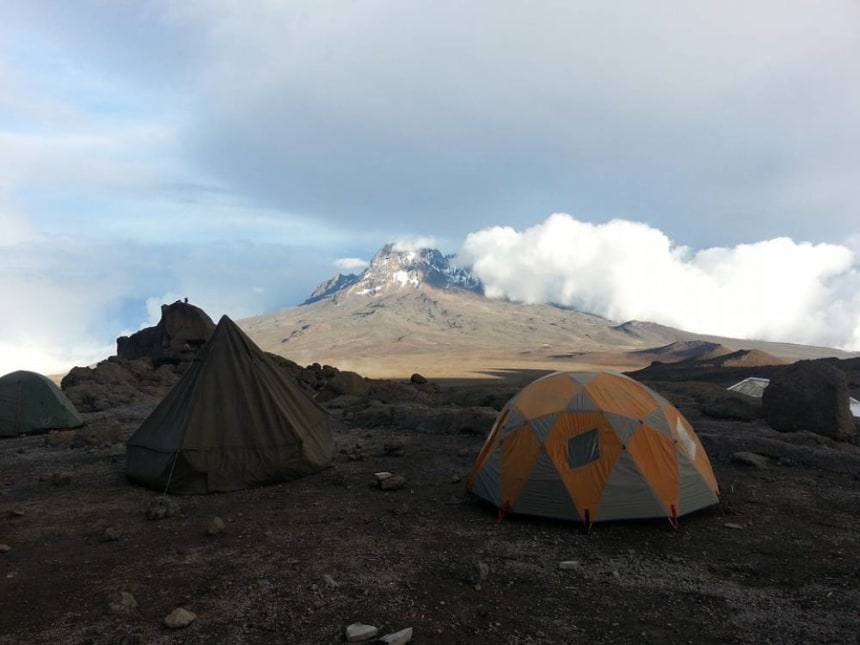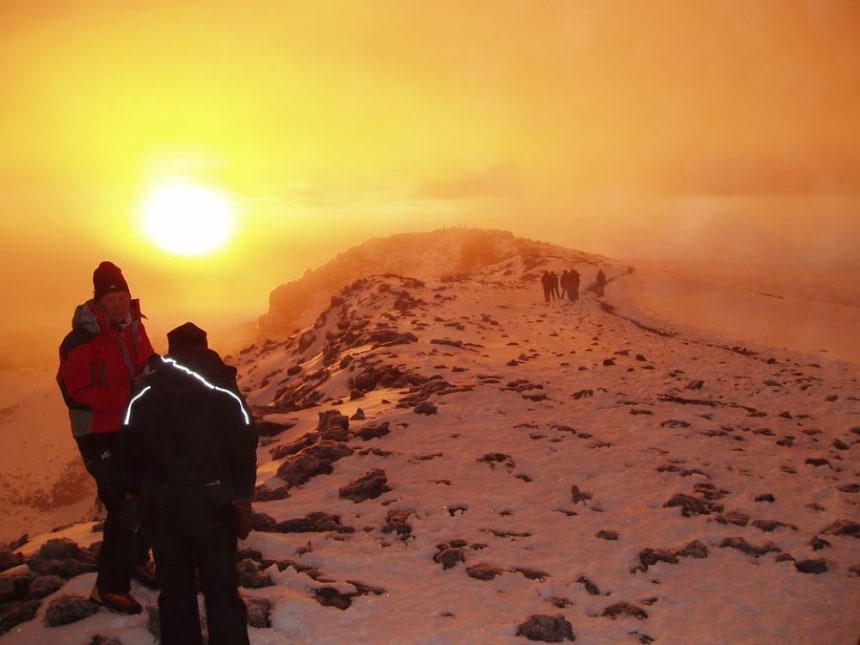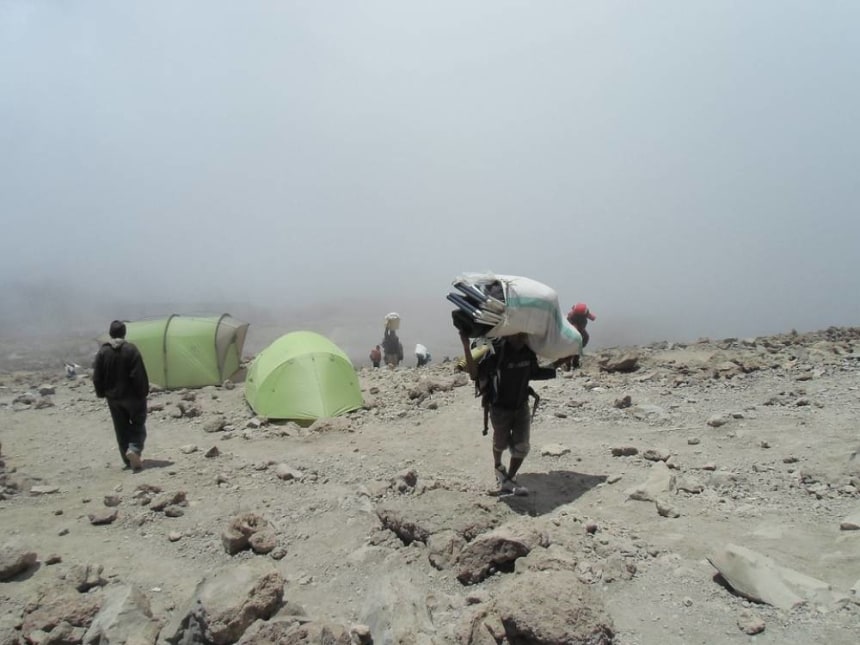
It is with great sadness that it was decided a post on Altitude Sickness on the mountain needed to be done. My training as a Wilderness First Responder does not help anyone climbing if I am not part of the expedition. What would help people is being informed on the risks involved when mountain climbing and how best to mitigate them.
Kindly share this post with anyone you know might be about to embark on a climb on Mt Kenya or Mt Kilimanjaro. Mind you the same risks are involved climbing Mt Meru and Mt Longonot but Mt Kenya and Kilimanjaro are in a league of their own when it comes to cases of altitude sickness. I have dropped my jokes, flowery language and funny pictures for this post because this is as serious as it gets. ALTITUDE SICKNESS IS A MATTER OF LIFE AND DEATH.
Mt Kenya and Mt Kilimanjaro offer great non-technical climbs for hikers both locally and internationally. Their location on the equator also allows for milder temperatures compared to other mountains of a similar altitude. Their proximity to Serengeti/Maasai Mara and other local national parks allows guests to have a combined climbing and safari package.
While these three factors are good for business and the tourism industry in both Kenya and Tanzania, it may not be the case for the rate of Altitude-related incidents as it translates to more summit attempts by inexperienced and untrained hikers. Despite not being in the top 100 highest peaks both mountains have acquired a notoriety for altitude-related incidents.
ALTITUDE SICKNESS
As one goes higher in elevation the concentration of oxygen in the atmosphere reduces. For most people who live at sea level and up to 2000 meters an ascent beyond 3000 meters results in mild hypoxia. Hypoxia is a deficiency in the amount of oxygen reaching the tissues in the body. This results in edema due to capillary dilation and leakage.
HACE
High Altitude Cerebral Edema is caused by capillary leakage of fluid into the brain. This presents as brain swelling and increased Intracranial Pressure (ICP).
Symptoms:
Mild HACE – Mild Headache, Fatigue, Nausea
Moderate HACE – Severe Headache and Vomiting
Severe HACE – Mental status changes and Ataxia
Treatment:
Mild HACE – Oxygen, rest day, Non-Steroidal Anti-Inflammatory Drugs (NSAIDs), Acetazolamide
Moderate HACE – descent of 500 meters, consider Dexamethasone
Severe HACE – Immediate descent of more than 500 meters, PROP, Dexamethasone.
It is important to note that a patient in severe HACE is not likely to survive without aggressive intervention.
HAPE
High Altitude Pulmonary Edema is the result of pulmonary artery constriction causing pulmonary hypertension. This has the effect of forcing fluid to leak from capillary beds into the lungs into the alveoli and swelling of lung tissue.
HAPE tends to develop several days after arrival at moderate altitudes of 3000 to 4000 meters.
Symptoms:
Mild HAPE – dry cough, mild Shortness of Breath on exertion
Moderate HAPE – persistent cough, crackles on auscultation, SOB at rest, low grade fever
Severe HAPE – mental status changes, respiratory failure, blood-tinged sputum, marked crackles
Treatment:
Mild HAPE – oxygen, rest day, hydration and food, acetazolamide
Moderate HAPE – immediate descent of 500 meters, consider nifedipine
Severe HAPE – PROP, immediate descent of more than 500 meters, nifedipine or tadalafil.
Moderate HAPE can quickly (5 hours) turn into severe HAPE which ultimately results in respiratory failure and death. Pulmonary edema may persist for several days after descent and require hospital observation and treatment. Unlike HACE, severe HAPE is seen at moderate altitudes (2800-4000 mts)
OTHER ALTITUDE ILLNESSES
Capillary dilation and leakage can produce edema anywhere in the body e.g. hands/feet. Swelling in the gut can produce diarrhea. Edema in the mucus membranes of the nose & sinuses can mimic the congestion of a cold or sinus infection. Altitude will make the symptoms of a pre-existing illness worse.
Altitude Illness Risk Factors
– Past history of altitude illness
– Respiratory depressants
– For AMS, AGE < 50
– Rapid Ascent
– Lives below 1000m
– Genetic predisposition
– For HAPE, exertion and cold air
– For HAPE, preexisting respiratory illness
– Sudden drop in atmospheric pressure
Altitude Sickness is always a risk when climbing above 3000 meters above sea level. It is therefore recommended that inexperienced hikers be accompanied by a Wilderness First Responder (WFR) or Wilderness Emergency Medical Technician (WEMT) for prevention and early detection of symptoms. Rate of ascent must also be monitored and a day of acclimatization is highly recommended. 5 days climb is recommended for Mt Kenya and 7 days for Kilimanjaro to allow the body to adjust to the altitude. Treatment of Altitude Sickness especially moderate to severe cases is always a race with time and must always be treated as an emergency situation.
On the brighter side if the mountain and the body are treated with the care and reverence they deserve then ascents will usually be a successful, wonderful and priceless experience.
Jeanette Wairimu
Wilderness First Responder (WMA – 09).




